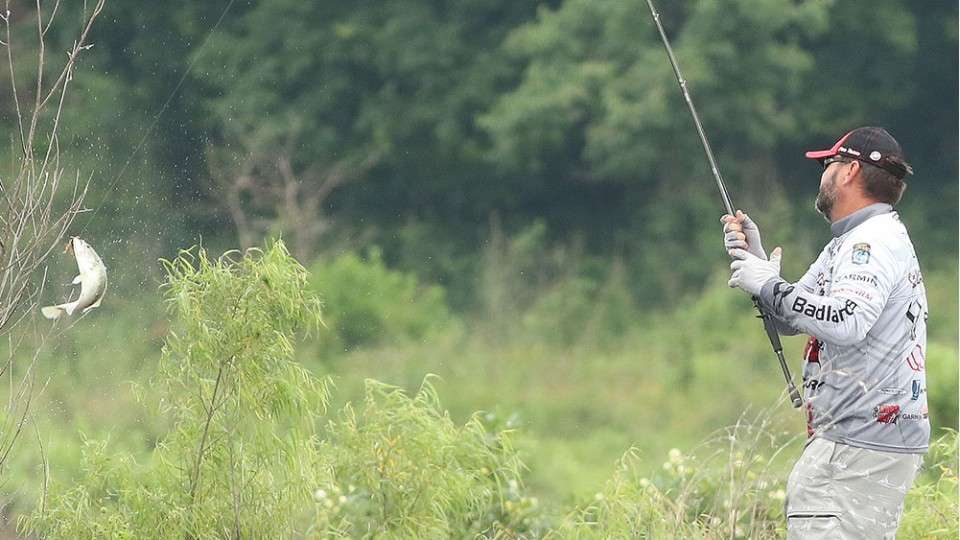
One of the best ways to increase your catch is to know what kind of bite you’re getting and what kind of bite you need. I break bites into three basic groups — reaction, defensive, feeding. Each is different and requires a different approach if we are going to maximize our catch.
The reaction bite
I put this one first because it’s the most important. Bass generally do not feed all day. They only eat for short periods of time. If you’re lucky enough to be fishing during one of those periods, you’ll be looking at a feeding bite. But, for most of the time you’ll need to force them to bite if you expect to be successful.
This is why you hear us talk about bouncing a crankbait off of something or making your lure move erratically. It causes the fish to strike out of instinct. I think of it like a cat and a mouse. If the mouse sits real still, the cat will sit real still. If the mouse darts towards safety, the cat will pounce.
That’s why a reaction bite usually comes quickly. You punch a plastic bait through a mat. It falls. It startles the bass. There’s no time to look anything over or decide what’s happening. They grab it. It’s instinct.
Our group [the Elite Series] is the very best at getting a reaction bite. We don’t fish when we want to fish. We fish when B.A.S.S. tells us to fish. It doesn’t matter if they’re biting. If we want to cash a check, we need to put them in the livewell. If you can’t develop a reaction bite, you won’t be around long.
Other than bouncing your lure off of things and making it change direction unexpectedly I’d suggest you sometimes move your bait really fast. This can be especially effective with jerkbaits. Another thing is to increase the weight of your jigs and plastics. A faster fall will sometimes trigger a reaction bite. I fish with heavy lures for exactly that reason.
The defensive bite
You see this bite when a bass isn’t feeding but will grab your lure anyway It’s probably defending itself, its territory or just plain irritated.
The best example I can think of is when there’s a shallow, submerged brush pile and you throw a buzzbait over it again and again. All of a sudden — maybe on the 12th or 15th cast — the water explodes. Don’t limit your lure choice to a buzzbait, however. The same thing will work with a crankbait, a jig or a Texas rigged worm. The important part of this bite is the repetition, not the lure.
I worked this bite last week on the Atchafalaya Basin. I’d bring a crankbait over a log time and time again before I got a bite. I made the same exact cast every time. They finally got to the point where they’d had enough.
Caution: Look for this bite only when you know there’s a bass inside or around your target. Otherwise you’ll waste a lot of valuable fishing time.
The feeding bite
This is the easy one. All you have to do is get the bait near the bass. It’s feeding. That means it’s looking for food. There nothing more to it than that.
A good example of this bite is when you throw a crankbait or spinnerbait over a target and the bass follows it out a ways and then eats it. That’s not a reaction bite because it’s taking too long, and it’s not a defensive bite because you’ve only thrown once. The bass chased it down because he or she was feeding.
Basically anybody can catch them when they’re feeding. Switch lures around until you find something that resembles what they’re on and you’ll be good to go.
Understanding what kind of bite you’re getting can be critical to catching more than one or two stragglers in a day. And, if there’s one bite you should perfect it’s the reaction bite. They spend most of their time not eating.

